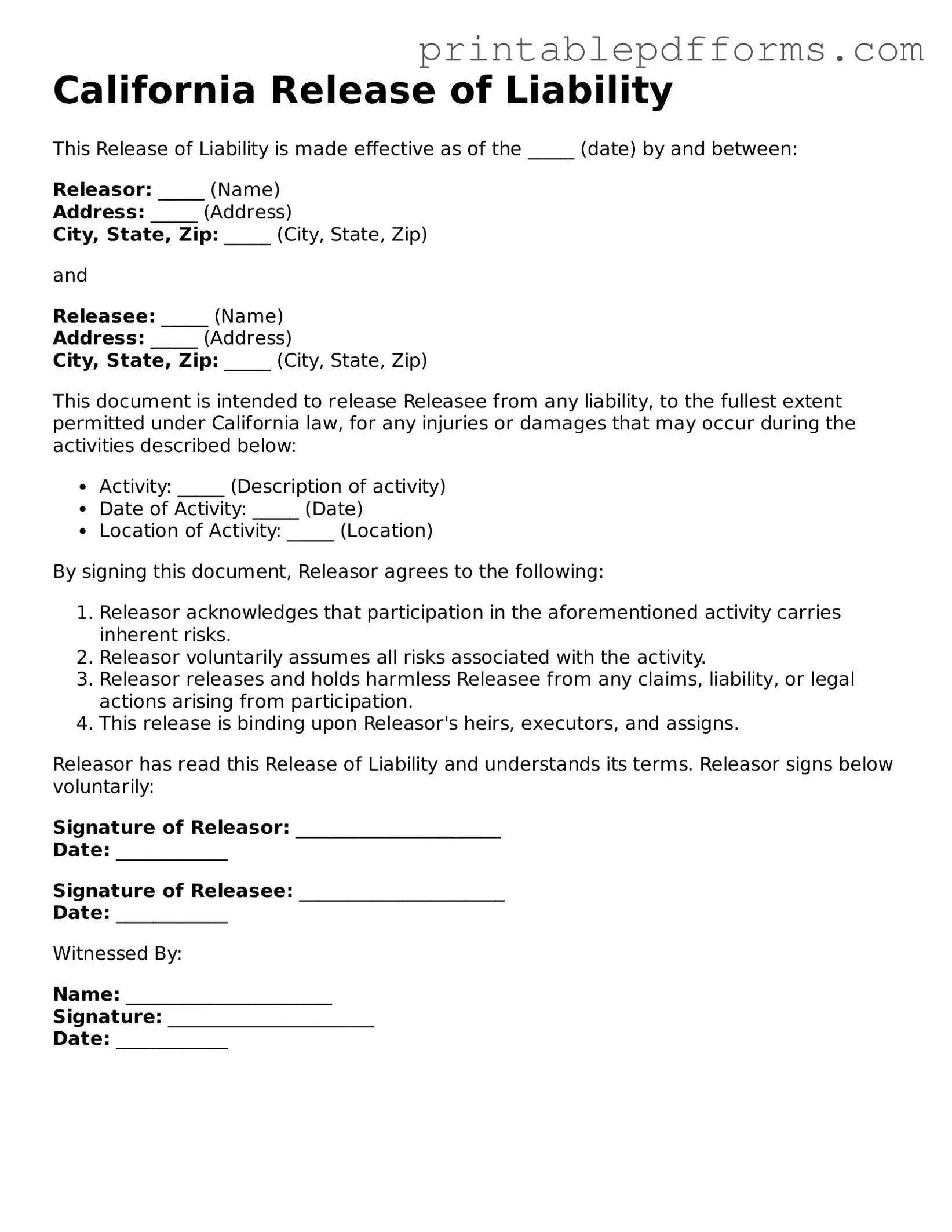A California Release of Liability form is a legal document that allows one party to waive their right to hold another party responsible for certain risks or injuries. This form is commonly used in activities where there is a potential for injury, such as sports, recreational activities, or events. By signing this document, participants acknowledge the risks involved and agree not to pursue legal action in case of an accident.
Any organization or individual offering activities that carry inherent risks can benefit from using a Release of Liability form. This includes:
-
Sports teams and coaches
-
Event organizers
-
Recreational facilities
-
Outdoor adventure companies
Essentially, if there is a chance of injury or damage, a Release of Liability can help protect against legal claims.
A comprehensive Release of Liability form should include the following elements:
-
The names of the parties involved.
-
A clear description of the activity or event.
-
A statement outlining the inherent risks associated with the activity.
-
A clause where the participant acknowledges these risks.
-
A section where the participant waives their right to sue.
-
The date and signature of the participant.
Including these elements ensures that the form is effective and legally enforceable.
Yes, a Release of Liability form can be legally binding in California, provided it meets certain criteria. The form must be clear, unambiguous, and voluntarily signed by the participant. Courts generally uphold these agreements unless they are deemed unconscionable or if there is evidence of gross negligence or willful misconduct.
Minors cannot legally sign contracts, including a Release of Liability form. However, a parent or legal guardian can sign on behalf of the minor. This signature acknowledges the risks and waives liability for the minor's participation in the activity.
Even with a signed Release of Liability, an injured party may still pursue legal action if they can prove that the injury was due to gross negligence or intentional misconduct. The effectiveness of the form may also depend on how well it was drafted and whether it adequately informed the participant of the risks involved.
To enhance the effectiveness of a Release of Liability form, consider the following tips:
-
Use clear and straightforward language.
-
Be specific about the activities covered.
-
Ensure participants understand the risks involved.
-
Consult with a legal professional to review the form.
Taking these steps can help ensure that the form is enforceable and protects against liability.
Notarization is not typically required for a Release of Liability form in California. However, having the document notarized can add an extra layer of authenticity and may help in legal disputes. It serves as proof that the participant willingly signed the form.
Once a Release of Liability form is signed, it generally cannot be revoked unilaterally. However, if the participant can demonstrate that they were misled or coerced into signing, they may have grounds to contest the validity of the form. It is crucial for participants to fully understand what they are signing before doing so.
California Release of Liability forms can be obtained from various sources, including:
-
Online legal document services
-
Local legal aid organizations
-
Lawyers specializing in personal injury or liability law
Ensure that the form you choose is tailored to California law and the specific activity you are involved in.
